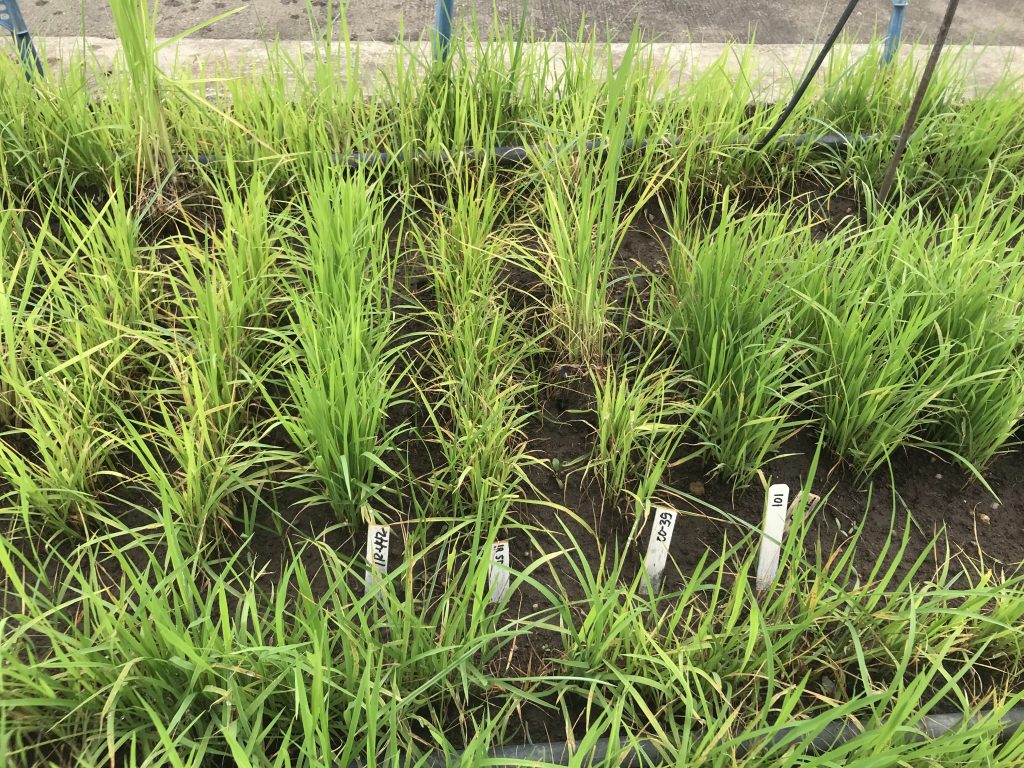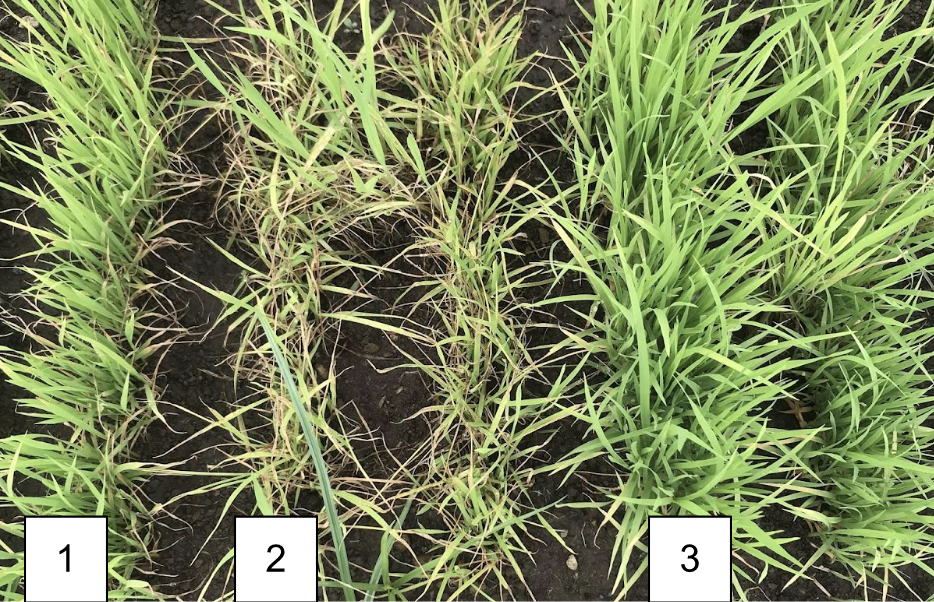An introduction to blast fungus (Magnaporthe oryzae) in rice
Today I experienced my first practical application of the science I usually only see happening in the lab or on paper. My supervisor, Dr. Swamy, introduced me to one of his current PhD students, soon-to-be Dr. Tapas Hore, who has been working on an extremely interesting project as part of his thesis. Dr. Hore has been developing a new strain of rice that is more resistant to a notoriously destructive rice disease called Blast.
Blast (Magnaporthe oryzae), also known as rice seedling blight, Johnson spot, or Imochi, is a fungal disease that can affect rice at any stage of growth. It is caused by the presence and spread of blast spores in areas that have low-moisture, high levels of rainfall, and overall cooler daytime temperatures.
The presence of blast in rice plants can be detected through physical symptoms such as white to gray-green lesions or spots, with dark green borders or diamond/spindle-shaped lesions with whitish-gray centers and red-brownish or necrotic borders on the leaf or collar of the rice plant (Figure 1 and Figure 2). These lesions can expand to kill off entire leaves of the rice plant.


Blast is a serious disease that threatens the growth of rice and, if not controlled, may cause massive reductions or even complete wipeouts of grain yields.
With the use of genetics, one can isolate genes associated with blast resistance in rice and, through varying combinations of the isolated genes, a strain of rice with desirably increased level of resistance to blast may be established — methodologies such as QTL* mapping and association mapping* may be used to accomplish this.
During my introduction to Mr. Hore’s blast project, I learnt that he had isolated 3 particular genes — Pi9, Pi35 and Pita2 — associated with blast resistance. These 3 genes were integrated into the genome of a rice breed in varying combinations — some rice seedlings contained all 3 genes, some had varying combinations of 2 out of the 3 genes, and some only contained 1 out the 3 genes.
In the screening nursery (Figure 3), where the growth and conditions of the genetically modified rice seedlings are observed and recorded, 3 rice breeds with varying susceptibilities to blast were used as controls (Figure 4) and the 3 were planted next to each other at the beginning of each experimental line which consisted of a further 20 experimental seedlings containing varying combinations of the 3 blast resistance associated genes. The experimental crops are covered every night to ensure an optimal environment is created and to control the spread of blast spores. The success of the genetically modified seedlings for blast resistance was judged by their physical condition i.e. the degree of evidence of blast (Figure 5).

Figure 3: The blast screening nursery

Figure 4: The 3 controls; IR-442 (low blast susceptibility), IR-50 (moderate blast susceptibility), 20-39 (high-blast susceptibility).

Figure 5: Genetically modified seedling with varying degrees of blast resistance.
1.) Moderately resistant.
2.)Low resistance.
3.)High resistance.
The blast resistant genes (Pi9, Pi35 and Pita2) can be isolated from the highly resistant experimental rice seedlings in order to determine what the optimal combination of these blast resistant genes may be. Dr. Hore’s target audience for his new strain of Blast resistant rice is Bangladesh and Cambodia — although the findings of his research is highly beneficial for the potential of providing other Blast affected countries with a more resistant rice strain.
The introduction I received to Dr. Hore’s project was brief but I gained a lot of insight on how a scientific idea can be translated from mind, to paper, to lab, and then to the field. Science it powerful and I’m excited for what I may learn next!
Glossary:
*QTL (Quantitative trait locus) analysis = a statistical method that links two types of information—phenotypic data (trait measurements) and genotypic data (usually molecular markers)—in an attempt to explain the genetic basis of variation in complex traits.
*Association mapping = also known as “linkage disequilibrium mapping”, is a method of mapping quantitative trait loci (QTLs) that takes advantage of historic linkage disequilibrium to link phenotypes (observable characteristics) to genotypes (the genetic constitution of organisms), uncovering genetic associations.
“Biology, it’s the technology which builds our world, and we can harness it to shift humanity from a scarcity to an abundance economy.”
— Ryan Bethencourt
I like how you have documented the activities of planting rice. Water is of course very important for its growth.…
Farmers can use various fungicides such as strobilurins or triazoles to fight the fungus but, with most chemicals used on…
What do the rice farmers currently do to fight the fungus? Do they spray chemicals? Are they expensive and have…

2 responses to “Let’s Talk Science!”